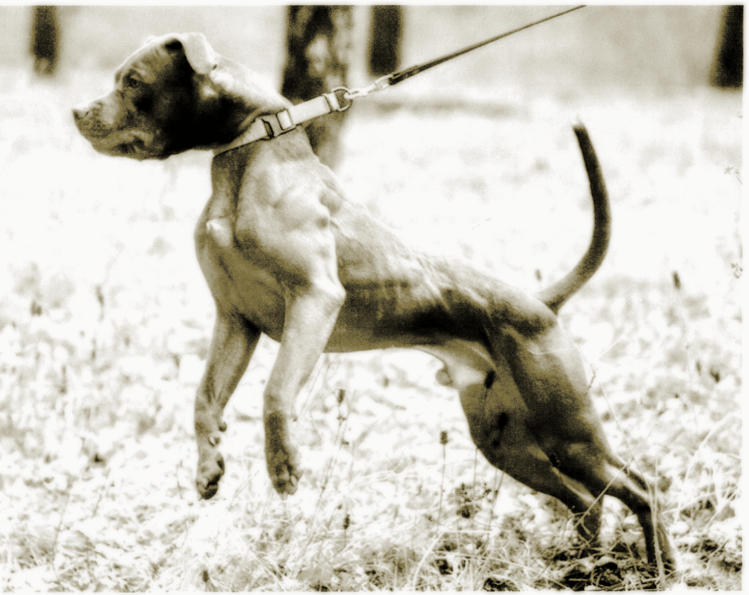
6 REASONS WHY YOUR DOG PULLING ON THE LEASH CAN BE DANGEROUS
AND WHAT TO DO TO PREVENT ANY MISHAPS
When your dog gets excited he often will pull on his leash, which causes the collar to squeeze around his neck. There was a study in 2008 that showed 70% of dog owners has leash pulling by their dogs. The problem is that the dog doesn’t stop when they reach the end of the leash, and sometimes pull even harder. Some dogs may keep pulling even when it’s painful for them.
The dangers of dogs pulling on a leash very from physical to psychological, resulting in injuries that can be temporary, long-term or permanent. A 2006 study brought to light that leash/collar pulling causes damage to a dog’s cornea, trachea and larynx. A more recent 2016 study found other hazards to both dogs and their owners, below are some of the most common dangers of dogs pulling on a leash that you must keep in mind.
1. COLLAR INJURIES
These can often occur when the collar starts cutting into your dog’s neck when they’re pulling the leash, or when you pull the dog to stop them. It isn’t commonly known the your dog’s neck is similar in it’s anatomy, strength and sensitivity.
Even when your dog keeps racing after something doesn’t mean that he hasn’t been hurt or is in pain just because it keeps on pulling.
Pulling on a leash can cause bruises around your dog’s neck, cuts and lacerations, even bone fracture. While some of these heal quickly, others can be dangerous and cause trauma to your dog.
2. CHOKING AND STRANGULATION
The greatest danger of a leash pull is your dog choking or being strangled by their own collar. REMEMBER leashes and collars can become deadly when they get stuck or wrapped around things, and this happens far more often then you would think. Reports show an average of 26,000 dogs every year (about 71 dogs a day) will be injured in a collar related accident.
Dogs don’t know when to stop pulling, if they get lost or stuck and become panicky, their reaction is to try to get themselves free no matter the cost. Pressure from the collar can stop them from getting air or even break their neck. By the time you find your dog, it may be too late to save their life.
3. HYPOTHYROIDISM (Decrease in Thyroid Gland Hormone)
The thyroid gland is located in the dog’s neck, around their trachea, exactly in the part where we put the collar. Pulling on a leash causes trauma to a dog’s thyroid gland and such repetitive traumas lead to inflammation and potential destruction of the gland, which in turn can lead to the decrease of thyroid gland hormone production in your dog.
When the body tries to get rid of the inflamed cells, your dog’s immune system has to destroy part of the gland itself, and low levels of thyroid hormone can cause hypothyroidism: weight gain, loss of fur, skin issues and potential organ failures.
4. EYE AND EAR PROBLEMS
Pulling on the leash can cause pressure on a dog’s neck, and this pressure quickly travels to your dog’s head, eyes and ears. As collars put all of the pressure on a very small area, they can prevent blood from circulating in a proper way to and from the dog’s head, neck and the rest of the body.
If your dog has some precondition such as eye or ear injury or glaucoma, the effects of pulling can be particularly dangerous for your dog’s organs and senses. Studies have found this to be the most common danger of leash pulling in dogs.
5. VAGUS NERVE ISSUES
The Vagus nerve is a part of every dog’s nervous system and it starts in their neck area. This nerve assists in regulating the tension in a dog’s blood vessels, and the proper functioning of the dog’s hear, lungs and stomach, therefore it is crucial for this nerve to remain intact.
When the vagus nerve is affected through leash pulling, it may cause fainting in dog’s. And constant jerking of the leash and putting pressure through the dog collar can also be responsible for damaging this nerve altogether, and shortening your dog’s life span.
6. DAMAGE TO THE NERVOUS SYSTEM
A dog’s neck has a loft of nerves inside of it. Consistently pulling on the leash can do harm to them, resulting in damage of peripheral nerves and neuromuscular junction. As a consequence, your dog will get a strange sensation in almost any part of the body. Most commonly it’s their legs that will be affected.
The sign of nerve damage in dogs is hypersensitivity or tingling sensations in their paws. You will know this is the case if your pet starts sniffing and licking their paws in confusion.
